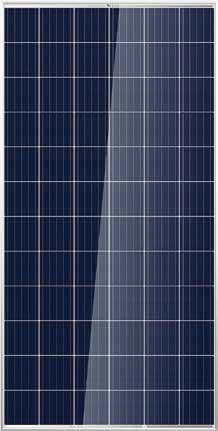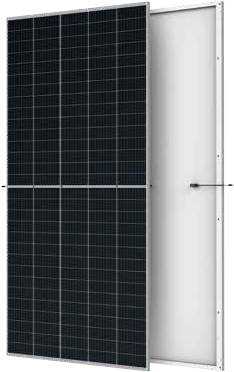The term solar panel is used colloquially for a photo-voltaic (PV) module.
A PV module is an assembly of photo-voltaic cells mounted in a framework for installation. Photo-voltaic cells use sunlight as a source of energy and generate direct current electricity. A collection of PV modules is called a PV Panel, and a system of Panels is an Array. Arrays of a photovoltaic system supply solar electricity to electrical equipment.
-

-
 High customer value • Lower LCOE (Levelized Cost Of Energy), reduced BOS (Balance Of System) cost, shorter payback time • Lower guaranteed first year and annual degradation • Designed for compatibility with existing mainstream system components • Higher return on Investment High power Mono Perc up to 505W • Large area cells based on 210mm silicon wafers and 1/3-cut cell technology • Up to 21.1% module effciency with high density interconnect technology • Multi-busbar technology for better light trapping effect, lower series resistance and improved current collection High reliability • Minimized micro-cracks with innovative non-destructive cutting technology • Ensured PID resistance through cell process and module material control • Resistant to harsh environments such as salt, ammonia, sand, high temperature and high humidity areas • Mechanical performance up to 5400 Pa positive load and 2400 Pa negative load High energy yield • Excellent IAM (Incident Angle Modifier) and low irradiation performance, validated by 3rd party certifications • The unique design provides optimized energy production under inter-row shading conditions • Lower temperature coeffcient (-0.36%) and operating temperature MAXIMUM EFFICIENCY : 21.1%
High customer value • Lower LCOE (Levelized Cost Of Energy), reduced BOS (Balance Of System) cost, shorter payback time • Lower guaranteed first year and annual degradation • Designed for compatibility with existing mainstream system components • Higher return on Investment High power Mono Perc up to 505W • Large area cells based on 210mm silicon wafers and 1/3-cut cell technology • Up to 21.1% module effciency with high density interconnect technology • Multi-busbar technology for better light trapping effect, lower series resistance and improved current collection High reliability • Minimized micro-cracks with innovative non-destructive cutting technology • Ensured PID resistance through cell process and module material control • Resistant to harsh environments such as salt, ammonia, sand, high temperature and high humidity areas • Mechanical performance up to 5400 Pa positive load and 2400 Pa negative load High energy yield • Excellent IAM (Incident Angle Modifier) and low irradiation performance, validated by 3rd party certifications • The unique design provides optimized energy production under inter-row shading conditions • Lower temperature coeffcient (-0.36%) and operating temperature MAXIMUM EFFICIENCY : 21.1%
